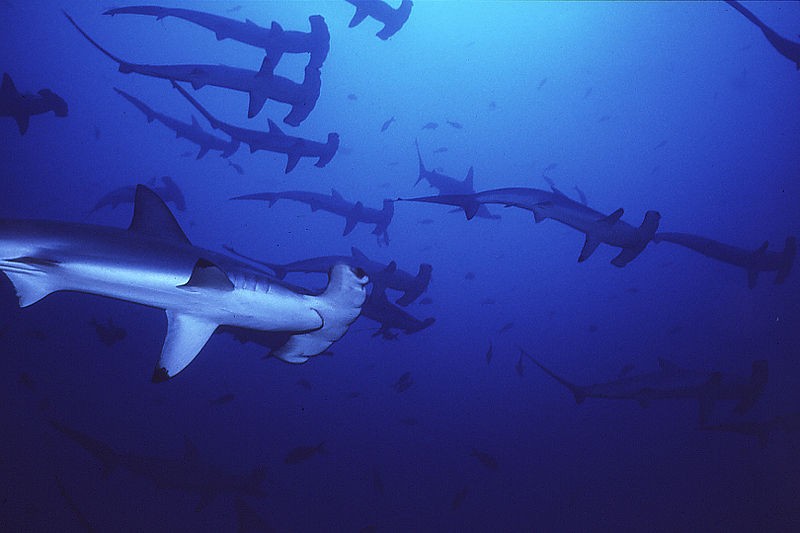Australian Government Seeks to Opt Out of Protection of Five Shark Species

The Australian government has been accused of an unprecedented reversal of its international conservation obligations by seeking to opt out of the protection of five shark species.
The government is submitting a “reservation” against three species of thresher shark and two species of hammerhead shark listed as protected migratory species under the UN-administered convention on the conservation of migratory species of wild animals.
The five types of shark were among 31 species granted new protection status at a convention summit in November. A record 21 species of shark, ray and sawfish were included, along with polar bears, whales and gazelles.
Although Australia did not object to the listings in November, it is now seeking to opt out of the commitment to cooperate with other countries to ensure the five migratory shark species do not become extinct. The expanded list is due to come into effect on 8 February.
According to the government, Australia already has effective protections in place for the thresher and hammerhead sharks. But the Humane Society International said the move was an “unprecedented act of domestic and international environmental vandalism”.
“This sends a very bad signal that Australia doesn’t care about these species,” Alexia Wellbelove, senior program manager at HSI, told Guardian Australia. “Australia seems to think other countries can cooperate on this but we will do nothing in our own waters. As far as we know, this has never happened before.”
Wellbelove said the opt-out was to appease commercial and recreational fishers, some of whom catch threshers and hammerhead sharks as primary catch or as bycatch for other species. She said HSI was exploring its legal options over the matter.
“This is a political decision, it has nothing to do with conservation, which is pretty pathetic really,” she said. “Australia has always spoken out against other countries making reservations under these kinds of treaties, so this move is really concerning.
“Hammerheads migrate between our waters and Indonesia’s waters, so you can’t just exclude one country ands say, ‘We are doing OK as it is.’ By their very nature, migratory species need international cooperation to avoid extinction.”
A spokesman for the federal environment minister, Greg Hunt, said the government’s move was to avoid “unintended consequences” for fishers in Australia, who would risk being fined up to $170,000 and face two years in jail even if they obeyed their permits. “There are still strong measures in place to protect thresher and hammerhead sharks in Australia and these will continue,” he said.
“The Australian government will continue to actively participate in shark conservation under the convention as a signatory of the memorandum of understanding on the conservation of migratory sharks, and through $4.6m funding for shark research and conservation activities. “We are fully committed to meeting our obligations under the convention, as well as protecting the rights of recreational fishers.”
Neither the hammerhead nor thresher species are listed as threatened under the federal government’s Environment Protection and Biodiversity Conservation Act.
But conservationists have raised concerns for both types of shark owing to unofficial reports of falling numbers. The New South Wales government has passed legislation to protect the great and scalloped hammerhead sharks in state waters, while the federal government is undertaking a study to see if three hammerhead variants – scalloped, great and smooth – should be nationally listed as threatened.
In a letter to HSI, Hunt said noted that the landing of thresher sharks was prohibited in tuna fisheries. “Recreationally, thresher and hammerhead sharks are subject to strict bag limits imposed by state and territory governments,” he wrote.
While the five species will not be covered by the international convention nor Australian federal protection, Hunt said: “This does not negate our support for international action related to these species, or for shark conservation more broadly.”
Photo courtesy of seawatch.org



